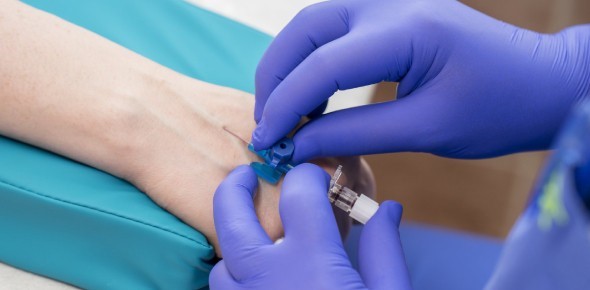A nurse is caring for a client who has chronic kidney disease. The nurse should expect the client to have which of the following clinical manifestations?
Fruity smelling breath.
Painful urination.
Hypotension.
Lethargy.
The Correct Answer is D
Choice A rationale:
Fruity-smelling breath is associated with diabetic ketoacidosis (DKA), which is not the expected manifestation of chronic kidney disease (CKD). DKA occurs in uncontrolled diabetes and is not the priority for this client.
Choice B rationale:
Painful urination is not a typical clinical manifestation of chronic kidney disease. It is more commonly associated with urinary tract infections or other urological issues.
Choice C rationale:
Hypotension may occur in end-stage kidney disease, but it is not specific to chronic kidney disease and is not a priority in this scenario.
Choice D rationale:
Lethargy is a common clinical manifestation of chronic kidney disease due to the accumulation of waste products in the blood, leading to uremia. It is a priority as it indicates the progression of the disease and the need for close monitoring and intervention.
Nursing Test Bank
Naxlex Comprehensive Predictor Exams
Related Questions
Correct Answer is C
Explanation
Choice A rationale:
Assessing the need for oral suction every 4 hours is essential in maintaining airway patency and preventing complications associated with excessive secretions. This is an appropriate action and does not require clarification.
Choice B rationale:
Checking the ventilator settings every 12 hours is necessary to ensure that the mechanical ventilation is providing adequate support for the client's respiratory needs. This prescription is appropriate and does not need clarification.
Choice C rationale:
Keeping the head of the client's bed elevated at 30° is important in preventing aspiration and ventilator-associated pneumonia. This position helps promote optimal lung expansion and improves oxygenation in ventilated clients.
Choice D rationale:
Performing oral hygiene using an alcohol-based oral rinse is not recommended for clients receiving mechanical ventilation. Alcohol-based products can be harmful if aspirated and may disrupt the normal oral flora, leading to complications. The nurse should use a non-alcohol-based oral rinse or foam swabs instead.
Correct Answer is C
Explanation
Verify that the client has adequate IV access.

Choice A rationale:
Administering vasopressin to the client might be necessary to manage the hemorrhage, but before any medication administration, it is crucial to ensure the client has adequate IV access. Vasopressin is a vasoconstrictor and can help control bleeding from esophageal varices, but its effectiveness relies on IV access to deliver the medication promptly.
Choice B rationale:
Requesting blood from the blood bank is essential for a client experiencing significant bleeding. However, the priority action is to verify IV access to administer any necessary blood products.
Choice C rationale:
This is the correct choice. Before initiating any interventions, ensuring the client has appropriate IV access is a priority. Adequate IV access is necessary to administer fluids, medications, or blood products promptly and effectively stabilize the client's blood pressure.
Choice D rationale:
Inserting an indwelling urinary catheter is not the priority action in this situation. While monitoring urine output is important, it should be secondary to addressing the client's hypotension and hemorrhage.
Whether you are a student looking to ace your exams or a practicing nurse seeking to enhance your expertise , our nursing education contents will empower you with the confidence and competence to make a difference in the lives of patients and become a respected leader in the healthcare field.
Visit Naxlex, invest in your future and unlock endless possibilities with our unparalleled nursing education contents today
Report Wrong Answer on the Current Question
Do you disagree with the answer? If yes, what is your expected answer? Explain.
Kindly be descriptive with the issue you are facing.
